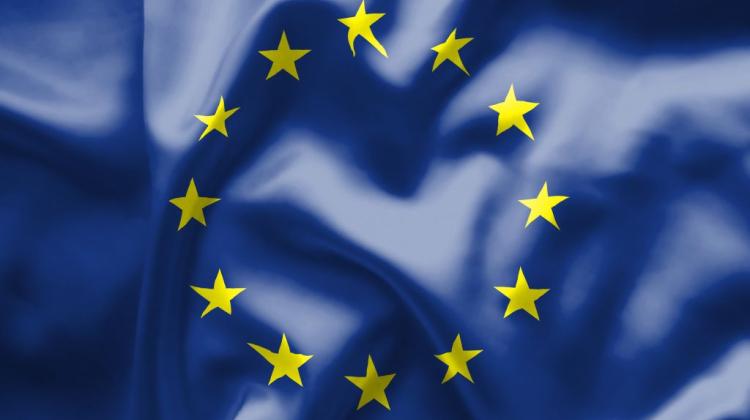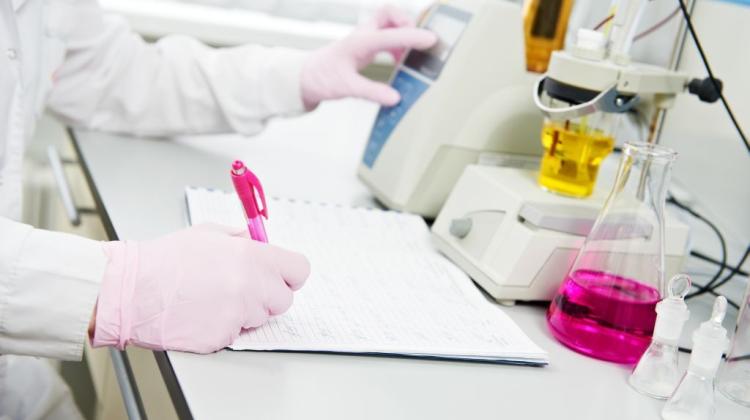Bujnicki: New gene editing techniques still not covered by law

EU law still does not cover new genome editing techniques with specific regulations. And these techniques are already being used in the world for food production, said Prof. Janusz Bujnicki, one of the important scientific advisors to the European Commission, who prepared an expert analysis in this field.
At the end of April, the team of seven scientific experts from the European Commission - High Level Group of Scientific Advisory Mechanisms (SAM-HLG) - prepared a document on new techniques used in agricultural biotechnology. In a form comprehensible even for laymen, the document summarizes the current knowledge of how biotechnologies help create new varieties of plants, animals, and micro-organisms.
The report describes and compares three types of techniques used to create new varieties of organisms: conventional breeding techniques (CBT), established techniques of genetic modification (ETGM) and new breeding techniques (NBT).
CBT includes crossing the best individuals, artificial insemination and transfer of embryos. The use of these techniques does not cause significant controversy and is governed by the relevant regulations.
Another group are the ETGM, developed in the 20th century. They are the the techniques that lead to obtaining genetically modified organisms (GMOs). The use of such techniques in agriculture is already regulated by laws that are much more restrictive in the European Union than in many other industrialized regions of the world.
The third group are the NBT, introduced already in the 21st century. They are based, among other things, on gene editing using systems such as CRISPR-Cas9. Using these techniques, small changes can be introduced into the DNA, such as naturally occurring mutations; they can also be used to make major changes, such as introducing new genes into the organism. The use of NBT, for example in the production of food or feed, has not yet been regulated in detail - neither in the EU nor in Poland.
***
PAP: Why does the European Commission need a document on biotechnologies used in agriculture?
Professor Janusz Bujnicki, biologist with the International Institute of Molecular and Cell Biology in Warsaw, member of SAM-HLG, one of the main authors of the paper: EU regulations on genetically modified organisms are several years old. Since then, great progress has been made in science and technology. Innovative techniques have been developed to create new varieties of organisms using genetic engineering. But EU legislation does not address the use of these techniques. A discussion has arisen as to whether products created using the new techniques should be regulated as conventional products or GMO products. There has been a need for scientific expertise to describe and compare the different types of techniques used, for example, in the production of food or feed. The document prepared by SAM-HLG responds to this need by presenting and summarising knowledge, while not taking a side in the discussion on what the new legislation should be like.
PAP: What are these new breeding techniques, NBT?
J.B.: I must start by explaining that the NBT is not a uniform group of techniques - and that is one of the main conclusions of our study. Some of the NBT aim only to create varieties that have already been obtained by conventional methods. Other NBT are used to create organisms with newly introduced DNA. In addition, part of the NBT are defined based on used technology (not taking into account the product), others based on the product (regardless of the technology). Some of them are small adaptations of previously used techniques, others are completely innovative. From a scientific standpoint, putting these different methods into one category has only historical justification: their only common feature is their "novelty". The biggest challenge is to classify those that are completely innovative.
PAP: Has anything new happened recently?
J.B.: A completely new mechanism has been discovered relatively recently, allowing for very precise, controlled introduction of changes in the DNA sequence of a cell. This mechanism occurs in nature, bacteria use it to defend against viruses. It is implemented in various ways, the best known of which is CRISPR-Cas9. According to many scholars, this is a breakthrough discovery that deserves the Nobel Prize. The techniques based on that system are referred to as genome editing. Compared to CBT and ETGM, new gene editing techniques allow for much easier, faster and cheaper changes in cell DNA and the creation of new varieties of organisms.
PAP: Do EU regulations mention genome editing? Do they allow or restrict it?
J.B.: At the moment there is no legislation in the European Union that would directly address these new techniques. And more and more voices suggest that it is needed. At present, it is not clear how to register or mark products created with the new techniques, how to control their production or import into the European Union.
I would like to emphasize that in our paper for the European Commission we do not give any recommendations on actions, nor do we refer to the legislative issues. Personally, I think that a reasonable regulation of such issues would be desirable: provided that it would take scientific expertise into account.
PAP: Are NBT already used in food production?
J.B.: Yes, these techniques are already being used - mainly outside Europe - to create such products as food or feed. For example, genome editing has been used to create common mushrooms do not change colour to brown. Or varieties of cows that give milk with smaller amount of harmful allergens. This is a very intensive area of research and development of new products so we can expect to see many new NBT applications in agriculture soon. The EU will not stop the innovation process throughout the world, but it can regulate the creation and sale of such products in its own territory.
PAP: How exactly are these new genome editing techniques - NBT - different from older GMO techniques?
J.B.: When it comes to established techniques of genetic modification - ETGM - they consists in an introduction of a piece of DNA from the outside, usually from another organism, into the body. This added DNA fragment can be incorporated into the recipient organism\'s DNA in many ways. In the case of animals and plants, ETGM do not allow to precisely control this process, so it is necessary to test a large number of created organisms that exhibit various genetic modifications to obtain the organism that has the desired properties and at the same time does not have any undesirable ones. That is time consuming and expensive.
In the case of new gene editing techniques, very precise modifications can be made to a specific DNA fragment - even to one pair of nucleotides. An organism with desirable traits can be obtained in one step, and the level of errors is very small. With these techniques, big changes can be made - for example, incorporating a large fragment from another organism into the DNA - as well as very small changes that resemble naturally occurring mutations.
PAP: Can an organism be tested to determine whether it has been genetically modified?
J.B.: That depends on the type of modification, but to a large extent it is independent of the technique used. For example, it is likely that large strands of foreign DNA can be detected if we know the sequence of the recipient organism - and if we can determine the organism from which the "new" gene has been copied. It is not always possible to exclude that such modifications have been achieved by conventional breeding techniques (CBT). On the other hand, in the case of minor changes, such as spot mutations, it is virtually impossible to identify the cause of such change. This is because some NBT methods result in essentially the same products as those obtained by classic CBT.
PAP: So how can we prove that someone has used such technique?
J.B.: From the point of view of the current state of the art and technology, it may be impossible.
PAP: The document that you have prepared, does not answer what the NBT legislation should be. The report is more like a map of a certain area of research. But what to with this map? Where do we go, if you - the experts, do not point the best paths?
J.B.: This form - an explanatory note - has been requested by the European Commission. This "map" that we have prepared shows the most important "places" related to agricultural biotechnology and the relationships between them. Based on our note, very different political and legislative decisions can be made. For example, the EU can choose to provide consumers with products that have been tested and found to be safe and healthy. Or it can choose a different path - eliminating from the market those products, for which that the method of obtaining (CBT, ETGM or NBT) can not be unambiguously determined. Choosing a path is the task for politicians. We, SAM-HLG as scientific advisors, do not make decisions for them. We can only tell them what science says about the available options and the likely consequences of following specific paths. In the case of an explanatory note, however, the objective is not to anticipate the consequences of any scenario, but merely describe of the current situation in terms of scientific knowledge.
PAP: But maybe we do need competent experts - guides to tell us which way is the best...
J.B.: SAM-HLG was established to provide scientific advice to the European Commission as a fair knowledge broker and not a party lobbying for specific solutions. The key feature of professional scientific advice is that we present not only what we know, but also how we know it and the extent to which the professionals dealing with the topic agree. And if there is a question to which science does not give an unequivocal answer yet, or the opinions of specialists vary, then we clearly present that as well. The world knows many "guides" who said they knew the best way while leading astray those who had succumbed to denying the scientific knowledge.
Interview by Ludwika Tomala
PAP - Science and Scholarship in Poland
kap/
lt/ zan/
Przed dodaniem komentarza prosimy o zapoznanie z Regulaminem forum serwisu Nauka w Polsce.


















